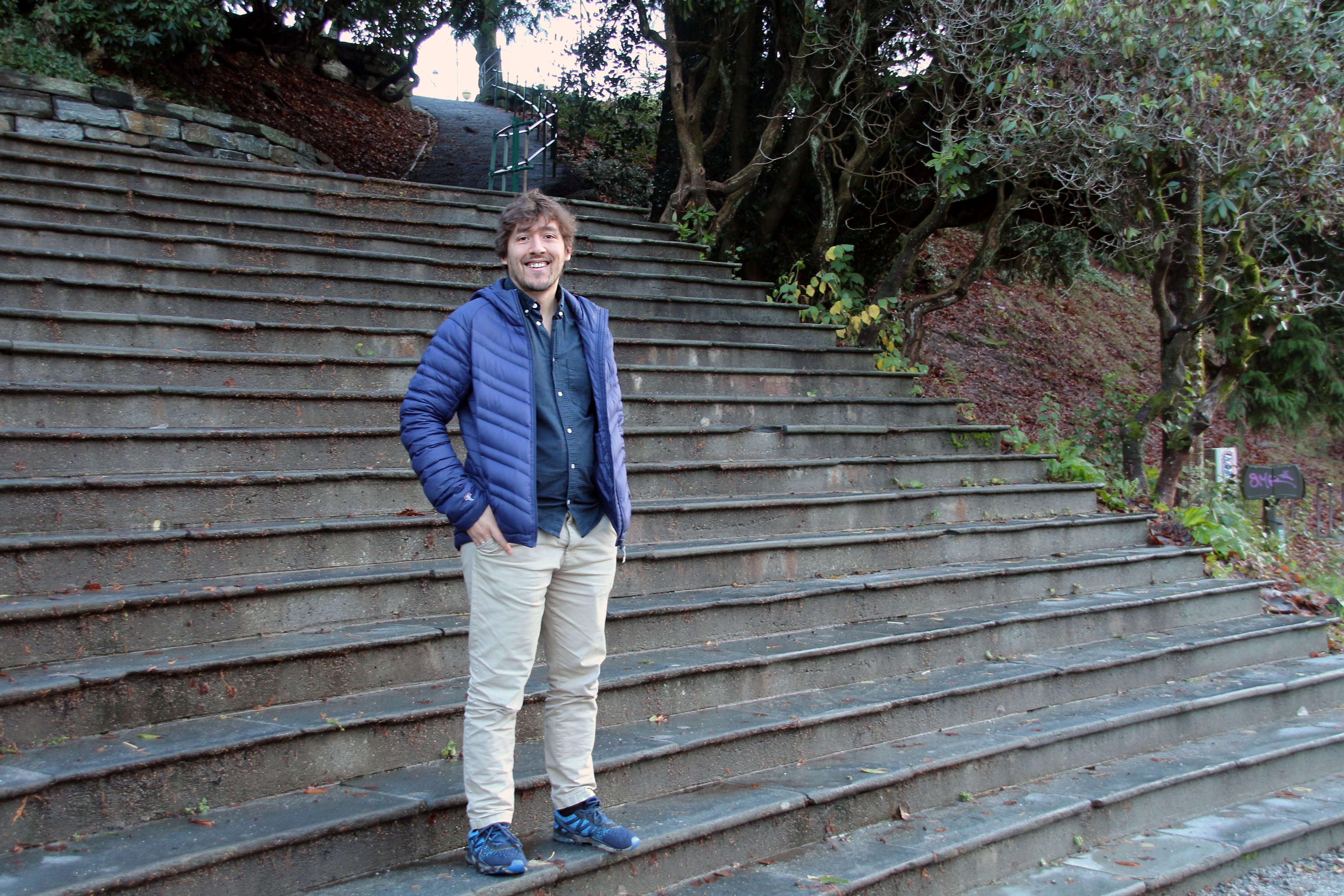“We came to Bergen in Christmas 2022, and we thought it was pretty here”, says Joshua Dorrington. He prefers Josh.
But that was not the main reason why he and his wife Olivia moved to Bergen in June. The answer to that question is a Marie Curie fellowship.
“It is a two-year position. I knew Camille Li (from UiB and the Bjerknes Centre) a bit from when I did my Ph.D. in Oxford, so when I looked for places to write my proposal, I thought Bergen seemed like a good place.”
His project SPLICER (Synoptic Precursors for developing Improved Constraints on Extreme Rainfall) focuses on understanding the causes of extreme rainfall, to work out where our current models go wrong, and so to better predict this type of extreme weather in the future.
Extremes
Dorrington is interested in extreme rainfall. Extreme rainfall in Europe in particular, because, he explains, flooding is the most damaging kind of extreme event here. And it is here the questions comes in. Will there be more frequent extreme rainfall in a changing climate? Will we see more intense rainfall? Where will it be worse?
“We know that when extreme rainfall happens, it is because of a particular weather setup. The climate models can ‘see’ the weather patterns that we know causes rainfall, even if they cannot do a great job with the rainfall itself. What I am trying to do is identify all the weather patterns that we know drive extreme rainfall in the current climate, then track how those weather patterns are changing in the climate models. Can we then use that as a sort of sanity check as a way of refining the rainfall projections?”

Settled down
The modelling community are now producing ultra-high resolution ‘kilometer scale’ simulations which can – in theory – produce accurate rainfall directly. But these are expensive to run, and, as yet not well analyzed. Dorrington plans to splice together the insights from high resolution and low-resolution models to get a more holistic understanding of future changes in rainfall.
Dorrington's wife is doing her Ph.D. in social science remotely at the University of Edinburgh. The couple just bought an apartment together in Bergen and are enjoying the city so far. They also found the time to learn the language with classes every week.
“It is a bit hard. It is six hours a week and homework too. I haven't done my homework this poorly my entire life. But if I am going to stay here, I need to learn so I can better appreciate the culture or follow what's happening in the news. And also, just to make more casual conversation with a wider range of people”, he says.
A good place
The first month at the Bjerknes Centre have been nice.
“There is a good energy and drive here that is very clearly felt. People talk about opportunities, new ideas, big research projects. And about how we can push things forward in the future, so that is quite energizing. It is a good place to be”.
As a kid, he always wanted to know why things worked the way they did. He quickly understood that he wanted to go to a university. When he was an undergraduate, he did a course on chaos theory.
“Then I realised that these exciting mathematical ideas had a very practical relevance to understanding weather and that it would be cool to work with weather and climate.”
Bergen bound
He went to Oxford for his Ph.D. where he worked on chaos and decadal variability in midlatitude weather. After Oxford he went to Germany and the Karlsruhe Institute of Technology where he first worked on dynamics of extreme rainfall.
After a time in Germany, they were looking for their next home.
“It was just too warm and too sunny in Germany, so we thought Bergen would be better. And now we are here”, he says with a smile.

